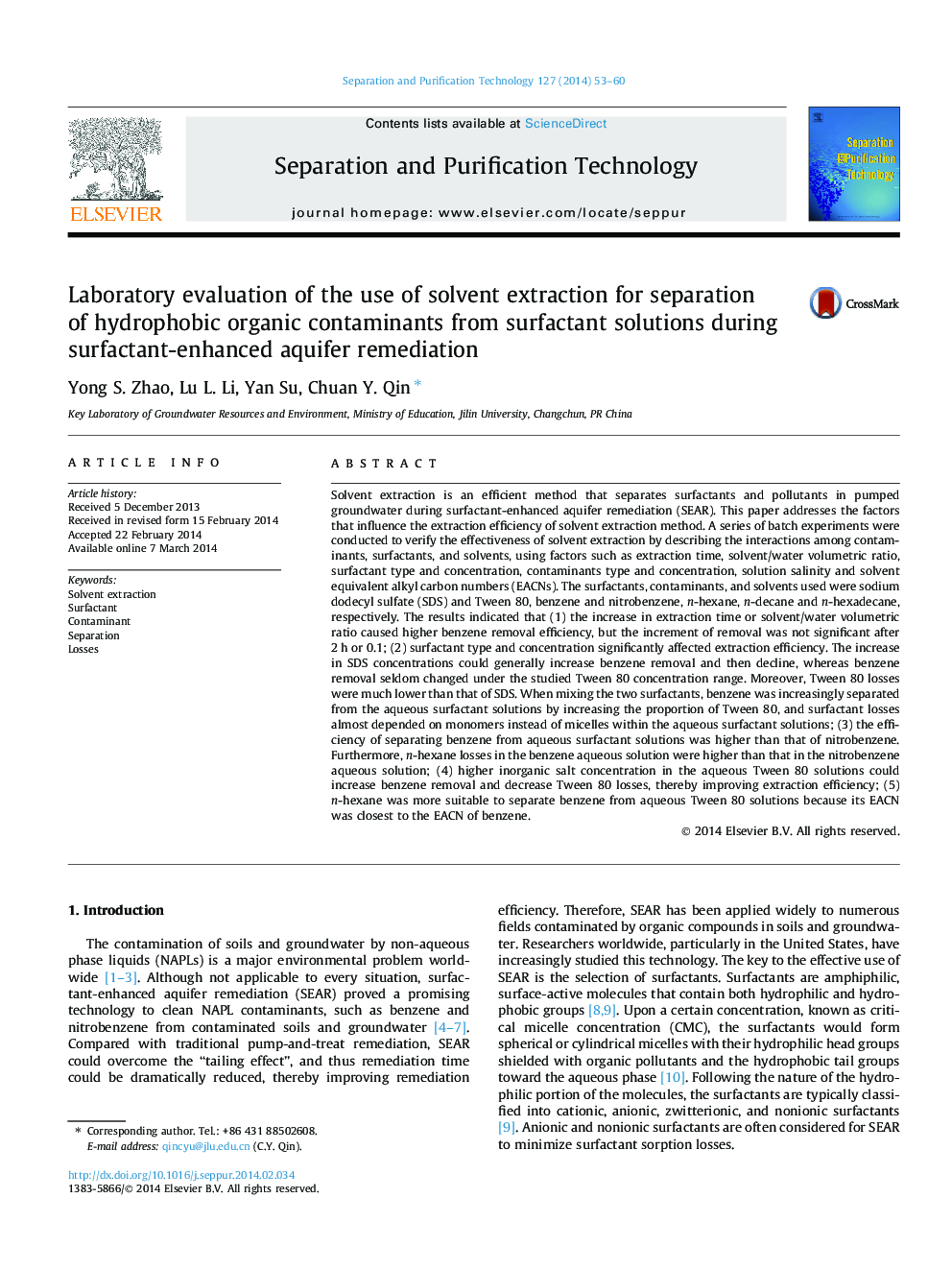| کد مقاله | کد نشریه | سال انتشار | مقاله انگلیسی | نسخه تمام متن |
|---|---|---|---|---|
| 641352 | 1456992 | 2014 | 8 صفحه PDF | دانلود رایگان |
• We described the interactions among contaminant, surfactant and solvent with data.
• The effect of mixed surfactants on solvent extraction efficiency was concerned.
• Extracting solvents should have similar EACNs with contaminants.
Solvent extraction is an efficient method that separates surfactants and pollutants in pumped groundwater during surfactant-enhanced aquifer remediation (SEAR). This paper addresses the factors that influence the extraction efficiency of solvent extraction method. A series of batch experiments were conducted to verify the effectiveness of solvent extraction by describing the interactions among contaminants, surfactants, and solvents, using factors such as extraction time, solvent/water volumetric ratio, surfactant type and concentration, contaminants type and concentration, solution salinity and solvent equivalent alkyl carbon numbers (EACNs). The surfactants, contaminants, and solvents used were sodium dodecyl sulfate (SDS) and Tween 80, benzene and nitrobenzene, n-hexane, n-decane and n-hexadecane, respectively. The results indicated that (1) the increase in extraction time or solvent/water volumetric ratio caused higher benzene removal efficiency, but the increment of removal was not significant after 2 h or 0.1; (2) surfactant type and concentration significantly affected extraction efficiency. The increase in SDS concentrations could generally increase benzene removal and then decline, whereas benzene removal seldom changed under the studied Tween 80 concentration range. Moreover, Tween 80 losses were much lower than that of SDS. When mixing the two surfactants, benzene was increasingly separated from the aqueous surfactant solutions by increasing the proportion of Tween 80, and surfactant losses almost depended on monomers instead of micelles within the aqueous surfactant solutions; (3) the efficiency of separating benzene from aqueous surfactant solutions was higher than that of nitrobenzene. Furthermore, n-hexane losses in the benzene aqueous solution were higher than that in the nitrobenzene aqueous solution; (4) higher inorganic salt concentration in the aqueous Tween 80 solutions could increase benzene removal and decrease Tween 80 losses, thereby improving extraction efficiency; (5) n-hexane was more suitable to separate benzene from aqueous Tween 80 solutions because its EACN was closest to the EACN of benzene.
Journal: Separation and Purification Technology - Volume 127, 30 April 2014, Pages 53–60
